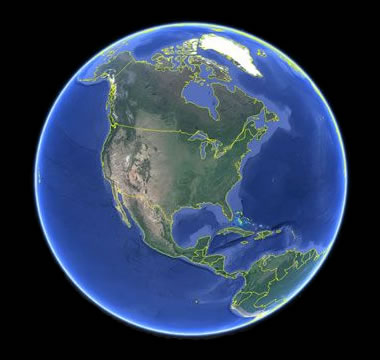
Before starting out my Tech inquiry on mapping I knew, of course, about Google Maps and was familiar to a small extent with Google Earth. However, I couldn’t really tell you what the difference was. As far as I could tell the applications were, to a large extent, redundant. But after digging a little deeper, I discovered that the two programs were both unique and practical in their own ways. So what’s the difference?
Google Maps is for routing and getting to places, and contains all the navigation, lightweight mapping power and points of interest. However, it possesses only low res, 2D satellite imagery so isn’t a great way to get a feel for where you’re heading. The street view feature is fine for close up images, but not if you want to zoom out a bit more. In essence, Maps favours utility over experience. Google Maps is most useful when a person is looking places to go and ways get there, with turn-for-turn navigation for biking, driving, walking, and bus-ing. The strong points of Maps are the maps themselves and points of interest (parks, schools, government buildings, etc). While Maps will cover the majority of what people need from a mapping app, if one is looking for the highest-detailed information, then Google Earth is where they will find it.
Google Earth is for exploring. It has complete high res 3D satellite data and only a little bit of information on places (and no point-to-point navigation). The point of Google Earth is visiting different places virtually in 3D – there aren’t many other features to distract the user. While not offering the rich data experience that Maps provides, if you want to really look around and see what things are like, Earth is the app for that. In essence, it favours experience over utility. The user can get guided fly-by tours of buildings and cities, or they can simply explore by zooming, scrolling, or panning. It can give you a great feel for the size of buildings and the topography of a given location. The combination of Street View with sophisticated satellite imaging makes for a great way to look around almost anywhere in the world, whether zoomed in or out. Earth also has the Voyager feature. This feature is a showcase of guided tours, intended to curate or guide your experience with the platform. The tours are in the form of map-based stories. One part of Voyager is known as Earth View, which combines high-quality landscape images of random places. Lastly, Google Earth has the “I’m Feeling Lucky” button. If you click on the button, you are taken to any random location across the globe. For any given place, Google Earth shows an information card which leads to a page dedicated to providing more information.
So, while Google Maps and Google Earth are similar in certain respects, they both have unique features and capabilities which provide teachers with interesting possibilities for introducing maps and technology into the classroom.
Leave a Reply